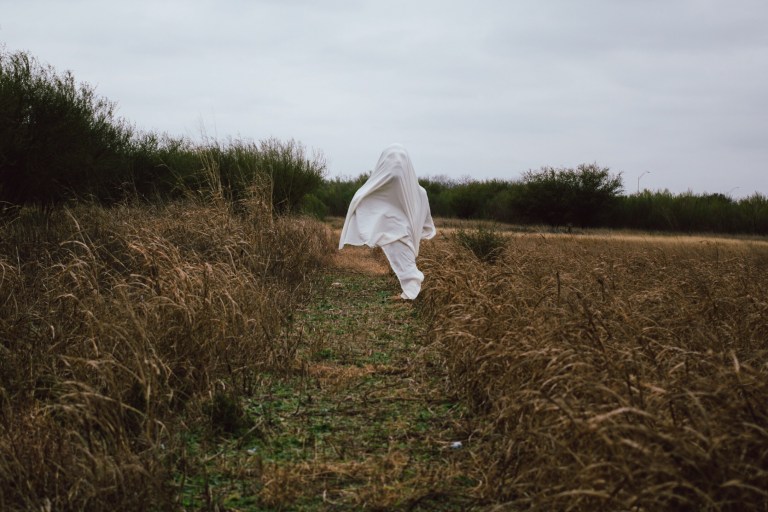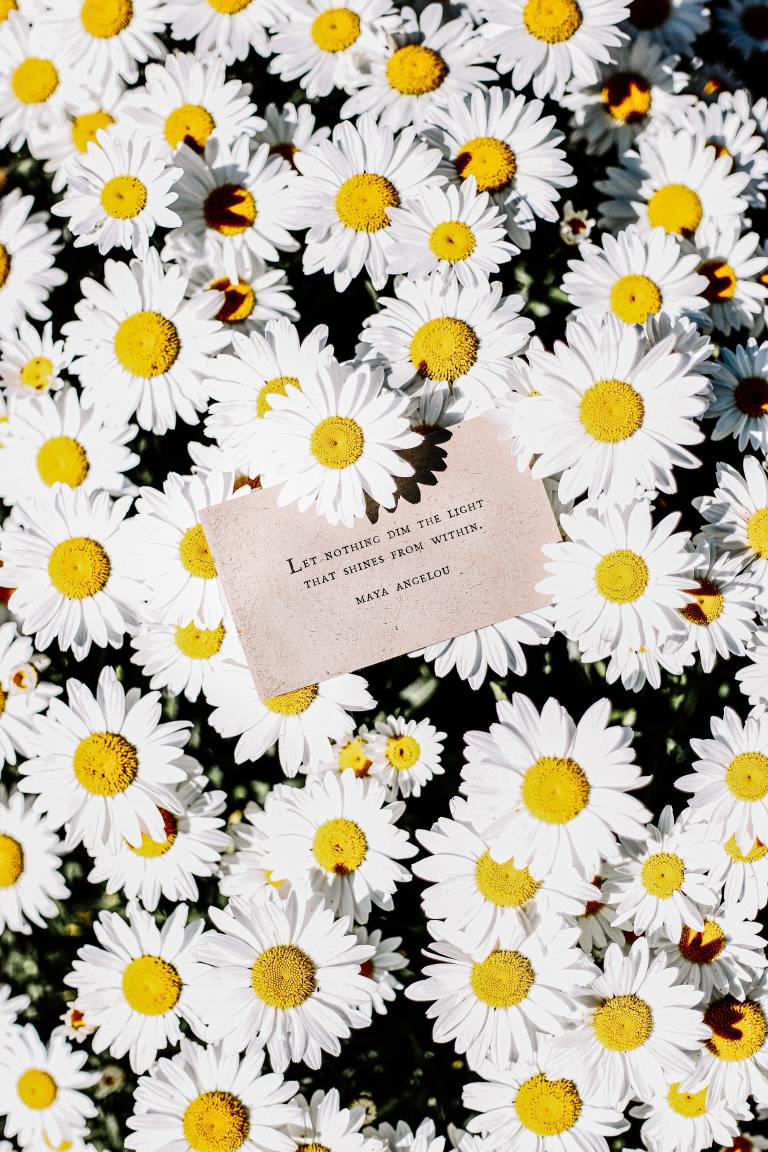The Uncut Hair Of Graves: Surrealist Gardening
In suburbia, the only good lawn is a dead lawn, a lawn where nothing moves, where every unloved bug and unsightly “weed” (in smirking quotes because only culture makes a weed) has been wiped out with a little help from our friends at Monsanto.
By Mark Dery
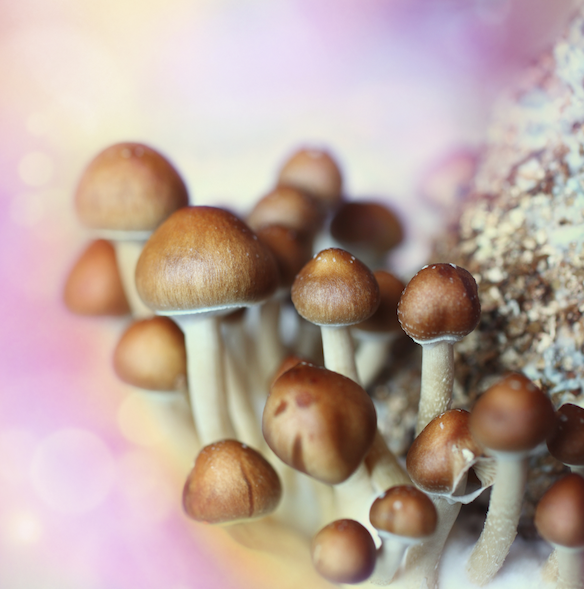
If the grass where Walt Whitman loafed contentedly in “Song of Myself” was “the beautiful uncut hair of graves,” the American lawn is a grave in a more literal sense, sterilized with pesticides and herbicides and sometimes even sprayed green.

In suburbia, the only good lawn is a dead lawn, a lawn where nothing moves, where every unloved bug and unsightly “weed” (in smirking quotes because only culture makes a weed) has been wiped out with a little help from our friends at Monsanto. Whitman’s grass was the tousled mane of wild places; the suburban lawn is a beachhead in suburbia’s assault on the wild edge—the battle line between sprawl and wilderness.
The perfect lawn is only one theater in culture’s war on nature, a slow-rolling battle of philosophical opposites whose frontlines include the golf green, the baseball diamond, the football field, and even the lowly freeway median, not to mention the commercial landscaping that heightens the “curb appeal” of malls, lends an air of waking fantasy to theme parks, and softens the functionalist austerity of corporate office complexes.

It’s a war that’s as old as civilization itself, but one fought with a kill-‘em-all, let-God-sort-‘em-out vengeance here in the Peaceable Kingdom, where our historical unconscious is haunted by post-traumatic memories of marauding savages and untamed beasts. Consider Young Goodman Brown, in Hawthorne’s 1835 story of the same name, set in colonial America:
He had taken a dreary road, darkened by all the gloomiest trees of the forest, which barely stood aside to let the narrow path creep through, and closed immediately behind. It was all as lonely as could be; and there is this peculiarity in such a solitude, that the traveller knows not who may be concealed by the innumerable trunks and the thick boughs overhead; so that with lonely footsteps he may yet be passing through an unseen multitude.
“There may be a devilish Indian behind every tree,” said Goodman Brown to himself; and he glanced fearfully behind him as he added, “What if the devil himself should be at my very elbow!”
The suburban lawn is the inevitable end product of the American mindset, a worldview rooted in the colonial consciousness that viewed nature, and the uncivilized heathen exiled to its god-forsaken wastes, as raw material for exploitation. To the New England colonists, the wilderness was a desolate place; only the Puritan ethos of hard work and the techniques of English farming could turn the land into a cornucopia (once smallpox and flintlocks had eradicated the troublesome natives). Here is Edward Johnson, writing in 1650 or thereabouts, in his Wonder-Working Providence of Sions Saviour in New-England:
[T]his remote, rocky, barren, bushy, wild-woody wilderness, a receptacle for wolves, bears, foxes, rockoons [sic], bags, beavers, otters, and all kind of wild creatures…now through the mercy of Christ become a second England for fertileness in so short a space, that it is indeed the wonder of the world.
If only he’d lived to see the supernaturally green lawns of suburbia called forth, with the divine intervention of Dow Chemical and the sprinkler, from the American wilderness.
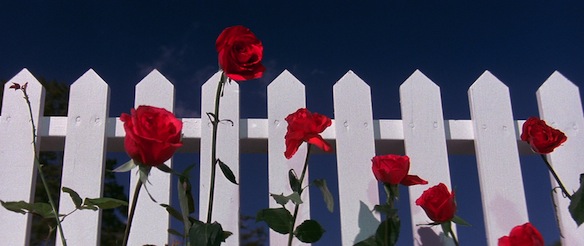
As Blue Velvet, American Beauty, and other Hollywood meditations on suburbia remind us, the perfectly groomed lawn, unthinkable without its white picket fence and picture-perfect roses, is equally an emblem, perhaps the quintessential emblem, of midcentury, Middle-American conformity: Joe Friday’s flattop applied to gardening; the Organization Man’s crew cut imposed on growing things.
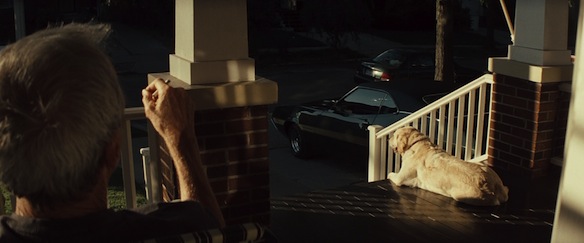
Every homeowner’s pride, the lawn is increasingly the burial plot of any sense of community in an ideologically polarized, racially flammable America. Bristling with “Armed Response” and “Neighborhood Watch” signs, it’s the hard-won hunk of private property where gun-toting Grumpy Old White Men stand their ground, like Clint Eastwood in Gran Torino, staring down the barrel of a rifle at the demographic wave of gooks and spics and spooks massed at the edge of his property line, snarling “Get off my lawn!”

The suburban lawn can be read, too, as a metaphor for the Middle American psyche. From that angle, the exuberant artificiality of its unnatural greenness looks like an allusion to our compulsive tendency to smile—a national tic—and to the android perfection of our dentition, both of which frighten interstellar travelers from Old Europe like the philosopher Jean Baudrillard. “Americans may have no identity, but they do have wonderful teeth,” he writes in America, transposing De Tocqueville into the key of postmodern irony.
Smile and others will smile back. Smile to show how transparent, how candid you are. Smile if you have nothing to say. Most of all, do not hide the fact you have nothing to say nor your total indifference to others. Let this emptiness, this profound indifference shine out spontaneously in your smile.

Smooth as the felt on a pool table and not much deeper, the suburban lawn is all surface, no depth, like a salesman’s smile, a televangelist’s smile, a candidate’s smile, the flawless smiles that beam at us from ads and movies. The perfect lawn, like the perfect smile, has nothing to say, and says it perfectly. It’s all ego, no id, its new-mown blankness a visual echo of the backyard swimming pool’s mirrored surface. Both reflect the self of Middle American myth: complacent, at ease with its narcissism, free from diseases of the psyche (in theory, at least) because, depthless, it has no unconscious to be troubled. Its subconscious, like the fear-haunted wild that spooked the Puritans, has been suburbanized—freed, by the power of positive thinking, the manic pursuit of the good life, and a reflexive anti-intellectualism that runs deep in the American grain, from angst, weltschmerz, and other afflictions born of too much brow-furrowing.
Yet there’s always the fear that something is burrowing under the perfect lawn—that the lawn’s perfection, like the fulsome smile, is in fact a dead giveaway of its deceptiveness, a sly insinuation that it’s hiding something. David Lynch literalizes this fear in Blue Velvet’s opening scene, which takes us from the spasms of a suburban dad, struck down by a heart attack while watering his lawn, to a beetle’s-eye view of the nightmare world hidden in the grass, a Lilliputian jungle where armored leviathans lock mandibles, jousting for territory. It’s a comic-grotesque vision of the suburban id, rendered in Lynch’s trademark style: Norman Rockwell noir. In Lynch on Lynch, he says,
My childhood was elegant homes, tree-lined streets, the milkman, building backyard forts, droning airplanes, blue skies, picket fences, green grass, cherry trees. Middle America as it’s supposed to be. But on the cherry tree there’s this pitch oozing out—some black, some yellow, and millions of red ants crawling all over it. I discovered that if one looks a little closer at this beautiful world, there are always red ants underneath.
The Surrealist knows these things, and takes comfort in the knowledge that the red ants are always there, just beneath the surface of things, waiting to pour by the millions out of any hole poked in the reassuring smoothness of bourgeois reality.
(Ants, symbols of death and corruption or, if blood-red, eros, recur obsessively in Dali’s work, swarming out of a hole in a man’s hand in the movie Un Chien Andalou—as they do a severed ear in Blue Velvet—and teeming across the dreamscapes of paintings such as The Great Masturbator, The Lugubrious Game, and The Persistence of Memory.)
The Surrealist knows, too, that the history of gardening is a chronicle of nature denatured: flowers ordered into serried ranks or fussily arranged into Disney’s idea of a woodland nook; trees and hedges groomed in styles that would kill a toy poodle with embarrassment; grass defoliated, buzz-cut, and lawn-rolled into an open-casket impersonation, pickled and primped, of a living thing.
For this reason, and because of its association with bourgeois domesticity, the Surrealist harbors an instinctual aversion to gardening, and an inextinguishable hostility toward suburbia’s obsessive-compulsive lawncare rituals. Surrealists are especially nettled by so-called “weed laws,” busybody ordinances that police the height of homeowners’ lawns to the inch, hector them about keeping their trees and shrubbery neatly trimmed, and exhort them to root out anything resembling a weed—all on the unfounded assumption that lawns grown long or, worse yet, replaced by native meadow, prairie, or chaparral, invite vermin, unleash allergens, and send property values into a death spiral. (Courts have ruled such claims baseless.) “Since the appearance of our homes and lawns speaks to the pride of ownership in the Inglewood community,” the website for Inglewood, California admonishes, “diligent property maintenance of lawns and associated landscaping will increase property values as you do your part to beautify our community”—beauty being, presumably, in the eye of the Rotarian next door.

The Surrealist would turn his lawn into a suburban jungle, if he could. Magnificently at his ease in his lawn chair, lost in a stand of grass as tall as a tall man’s eyebrows, he welcomes the return of the forest primeval. As archetype, the Forest is one half of a philosophical binary whose flipside is the Garden (of which the manicured lawn is the most neurotically regimented example—nature stripped of its unconscious). If the mass-produced lawn is the outward manifestation of the Middle American psyche, with its sanctimonious superego, its aesthetics on loan from Reader’s Digest, and its assembly-line uniformity, the forest gives shape to the unconscious. Think of the trackless wood of Dante’s Inferno, the black forests of Grimm’s fairy tales, the “dark wilderness” where Salem’s good citizens consort with the devil in “Young Goodman Brown,” the Wild Wood of Wind in the Willows, the Mirkwood of Tolkien’s Lord of the Rings, the Forbidden Forest of the Harry Potter novels. “Since ancient times the near-impenetrable forest in which we get lost has symbolized the dark, hidden, near-impenetrable world of our unconscious,” Bruno Bettelheim writes, in The Uses of Enchantment. The protagonist’s journey into its shadowy, unmapped vastness is a descent into the unplumbed depths of the self, an allegorical interpretation underscored by the scholar of Germanic mythology Francis Gentry when he observes that “in the Norse tradition ‘crossing the Black Forest’ came to signify penetrating the barriers between one world and another.”
Given all the time, money, and Miracle-Gro in the world, the Surrealist suburbanite would conjure up the Forest of the Unconscious (or a tribute to it in topiary, at least) on his tract-home plot.
But how does the Surrealist garden grow? With Surrealist flora, every which way but “all in a row,” is the flip response. But since none of the movement’s charter members ever turned his or her mind to the question of horticulture, it falls to us to theorize which plants, and horticultural aesthetics, are Surrealist, and why.
Carnivorous plants are Surrealist, obviously, especially the Venus flytrap, not only because its pink, lubricious maw, bristling with fangs, makes us think, unavoidably, of Freud’s man-eating vagina dentata—Dionaea muscipula brings the Monstrous Feminine to the garden party—but because its appetite for flies violates the Natural Order of Things. Flesh-eating flora are the plant kingdom’s revenge on Animalia. They’re Surrealist in their bizarre union of docile greenery and savage beast, an unholy communion embodied with especial perversity in the pitcher plant: “It is possible to perform an autopsy on a well-fed specimen by cutting one trumpet-shaped leaf lengthways,” writes Amy Stewart, in Wicked Plants, “exposing a ghastly mass grave of dead flies.” Large plants have been known to feast on larger prey: investigating complaints of a foul smell, staff at the Jardin Botanique in Lyon, France discovered, inside one of the bigger specimens of Nepenthes truncata, a partly digested mouse.

Mushrooms are Surrealist, most obviously because some, such as the hallucinogenic members of the Psilocybe genus, turn the user’s mind into a bathysphere, plunging him into the abyssal zones of consciousness. They’re Surrealist, too, in their role as emissaries of the underworld, thriving in dark places, clinging to the undersides of things, feeding on decay and “crumbs of shadow” as Sylvia Plath puts it in her poem “Mushrooms.” (Some, such as the fatally toxic Destroying Angel, are themselves agents of death.) Plath seizes on their uncanniness, envisioning toadstools as armies of the night, pale and blind, creeping stealthily toward dominion over the daylit world:
Nobody sees us,
Stops us, betrays us;
The small grains make room.
…
Nudgers and shovers
In spite of ourselves.
Our kind multiplies:
We shall by morning
Inherit the earth.
Our foot’s in the door.
The extraterrestrials have always been with us, disguised as the fruiting bodies of fungi.

Plants that mock taxonomy, impersonating stones, such as lithops (also known as pebble plants) and split-rock succulents, are Surrealist in their dreamlike conjunction of opposites. Time travelers such as the cycads, unchanged since the Jurassic, are Surrealist in their ability to turn back our mental clocks, stirring prehistoric memories in the evolutionary unconscious; wandering among them, we half-expect to see some sauropod browsing on their fronds. Likewise, the homunculus-shaped Mandrake root and the towering Saguaro cactus, limbs lifted in alien greeting like some spiny delegate from a vegetable planet, are Surrealist in their conflation of the otherworldly and the anthropomorphic. Topiary, if taken to avant-garde extremes that push the envelope of its Disneyesque kitschiness, has Surrealist possibilities; so, too, does that Cartesian rationalization of the labyrinth of the unconscious, the hedge maze, especially if a gibbering madman, like the axe-wielding Jack Torrance in The Shining, is pursuing you through it, howling for your head.

Of course, the Surrealist of modest means and limited time—which is to say: most of us—settles, more often than not, for a long-haired lawn.
The late J.G. Ballard—who amid the Pop-Art ferment of ‘60s London single-handedly created the Surrealist SF novel, and did it while playing stay-at-home dad in the disconcertingly ordinary suburb of Shepperton—was the Surrealist suburbanite par excellence, with the overgrown garden to prove it. After Ballard’s death in 2009, his semi-detached home went on the market; photos posted online reveal a back yard that seems to have undergone “archaeopsychic” regression, like the characters in his novel The Drowned World, devolving into a primordial thicket that looks as if it could swallow a lawnmower whole, leaving nothing but a trail of gasoline.
It’s hard not to read Ballard’s garden as a tongue-in-cheek allusion to the Triassic Eden of The Drowned World, with its “dense groves of giant gymnosperms” and its basilisks and iguanas, reborn dinosaurs who regard the novel’s humans with a speculative eye. “The typically ‘English’ landscape of greenwood, meadow, and piping hedgerow…holds no interest for Ballard,” writes the critic David Pringle, in his essay “The Fourfold Symbolism of J.G. Ballard.” “He sees nature in a less sentimental light: it is rich, fecund, very much alive, but essentially alien to man.” Ballard’s back-yard forest recalls the dense, overgrown landscapes of Max Ernst paintings like Europe After the Rain (1940-’42) and The Eye of Silence (1943), rotting jungles subsiding into a slurry of mold, drained submarine worlds festooned with seaweed, steaming rankly in the sun as they wait for a tide that will never return.
“The garden was a wonderful jungle,” Claire Walsh, his partner of 40 years, told me, by e-mail. “When I was there for the last time I nearly lost my footing as my ankles were trapped in roots and loose bricks, while brambles caught and tore my sleeves. Definitely on the side of wildness, a haven for birds and small mammals.” With a note of regret, she mentions that the house has been sold, adding, “Sadly, all this”—the untamed vegetation—“will have been stripped back, pulled out and tidied away” by the new owners.
Doubtless, they’ll mow the lawn. ![]()



